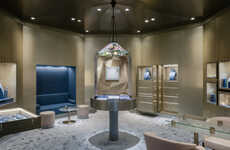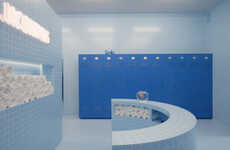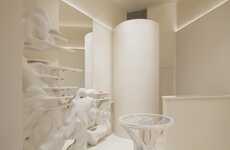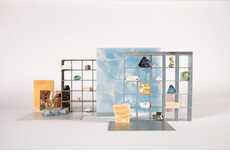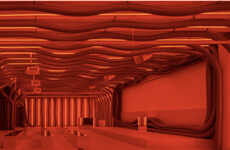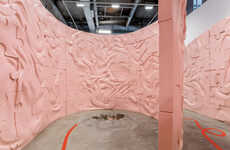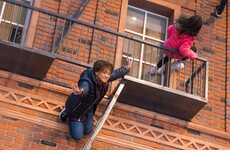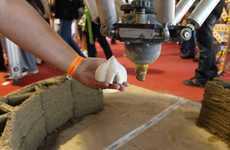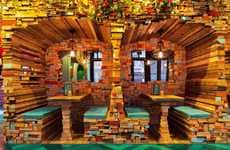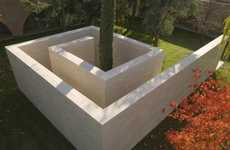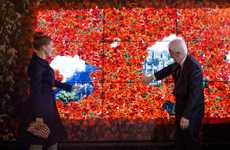
'PuLSaTe' Uses Op-Art Architecture to Create a Captivating Showroom
Gil Cohen — March 17, 2013 — Art & Design
References: nathanaeldorent & contemporist
Meant to entice pedestrians and convince them that they need to step inside, the PuLSaTe installation project uses op-art architecture techniques for an unforgettable showroom space.
A collaboration by architects Lily Jencks and Nathanael Dorent, the project utilizes interlocking SistemN porcelain tiles by Marazzi, creating a pattern that is compellingly vivid and mentally invigorating with its explosive illusion. This illusory effect is achieved through a methodically arranged herringbone pattern that almost physically draws people in through the door, an impressive visual impact that suits the Capitol Designer Studio tile-selling showroom extremely well.
As Jencks explains, the oblique and invigorating use of op-art architecture in this showroom installation gives customers a dynamic experience that allows them to "rethink the commercial transaction as something more creative," which is advantageous for any interior design studio.
A collaboration by architects Lily Jencks and Nathanael Dorent, the project utilizes interlocking SistemN porcelain tiles by Marazzi, creating a pattern that is compellingly vivid and mentally invigorating with its explosive illusion. This illusory effect is achieved through a methodically arranged herringbone pattern that almost physically draws people in through the door, an impressive visual impact that suits the Capitol Designer Studio tile-selling showroom extremely well.
As Jencks explains, the oblique and invigorating use of op-art architecture in this showroom installation gives customers a dynamic experience that allows them to "rethink the commercial transaction as something more creative," which is advantageous for any interior design studio.
Trend Themes
1. Op-art Architecture - Op-art architecture techniques create visually captivating and immersive spaces that entice and engage customers.
2. Illusory Effects - Illusory effects created through pattern and arrangement enhance the visual impact and draw customers into showroom spaces.
3. Dynamic Customer Experience - Using op-art architecture in showroom installations redefines the commercial transaction, providing customers with a more creative and engaging experience.
Industry Implications
1. Interior Design - Op-art architecture techniques can revolutionize interior design showrooms, creating unique and visually striking spaces.
2. Architecture - Incorporating illusory effects in architectural design opens up new possibilities for creating visually stunning buildings and structures.
3. Retail - Dynamic customer experiences created through op-art architecture can revolutionize the retail industry, enhancing customer engagement and redefining traditional shopping experiences.
4.8
Score
Popularity
Activity
Freshness

